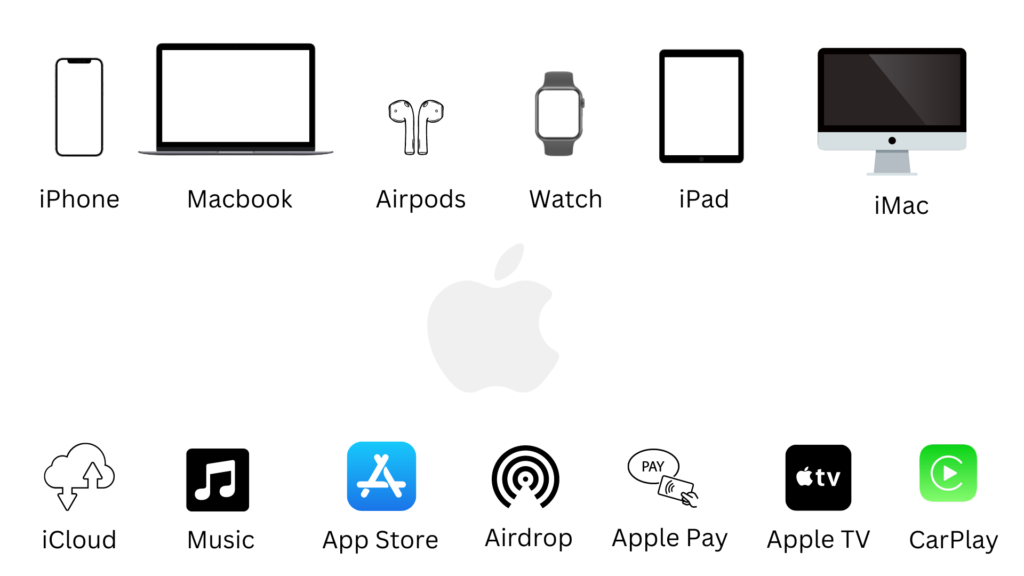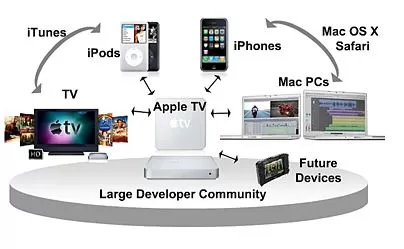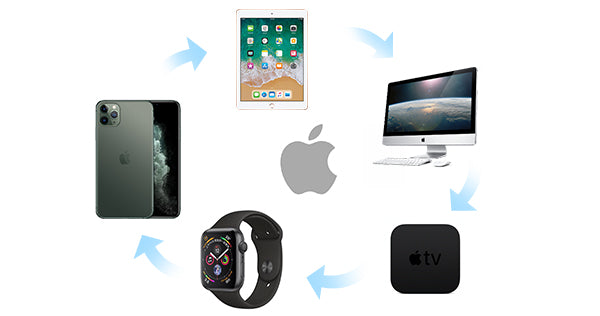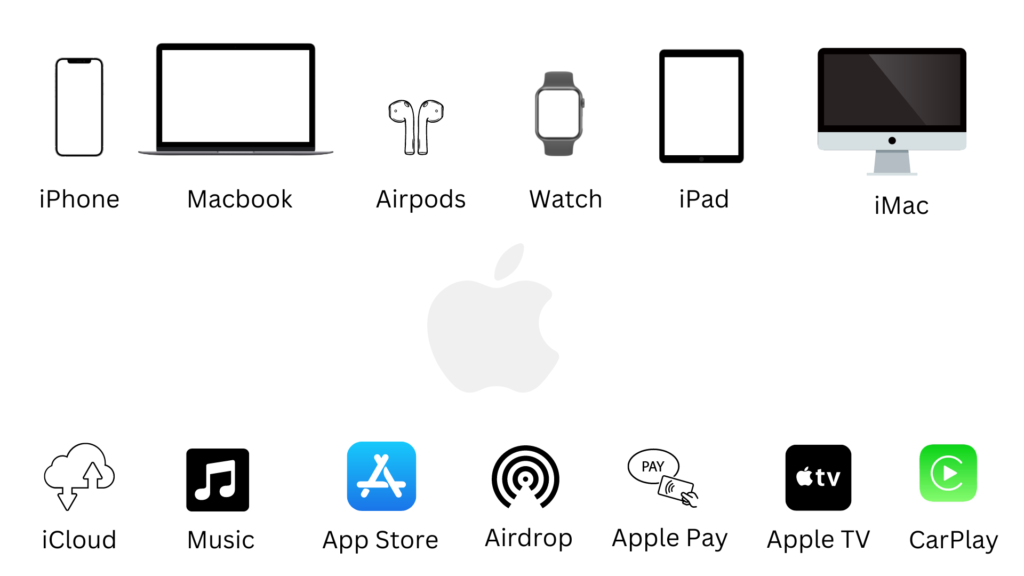Apple’s Product Ecosystem: The Seamless Symphony of Innovation

Apple has created an ecosystem of interconnected products and services that millions of users worldwide rely on every day. This ecosystem, often hailed as Apple’s most significant competitive advantage, delivers unmatched convenience, integration, and reliability. Whether it’s an iPhone syncing effortlessly with a MacBook or an Apple Watch acting as an extension of the iPhone, Apple’s ecosystem transforms isolated devices into a harmonious network.
In this article, we’ll dive deep into the components of Apple’s ecosystem, its unique benefits, and why it stands apart from competitors.
What Is Apple’s Product Ecosystem?
At its core, Apple’s product ecosystem refers to how Apple devices, software, and services work together seamlessly. Unlike competitors that rely on partnerships and third-party platforms, Apple’s end-to-end control ensures a fully integrated experience for users.
Key Components of Apple’s Ecosystem:
- Hardware: iPhones, MacBooks, iPads, Apple Watches, and AirPods.
- Software: iOS, macOS, watchOS, and iPadOS.
- Services: Apple Music, iCloud, Apple TV+, Fitness+, and the App Store.
Each element complements the others, creating a cohesive experience designed to enhance productivity, entertainment, and communication.
Seamless Integration: The Heart of Apple’s Ecosystem
Continuity Across Devices
One of Apple’s standout features is Continuity, which allows users to transition effortlessly between devices. Here’s how it works:
– Start drafting an email on your iPhone, and finish it on your MacBook.
– Copy text on an iPad and paste it on a Mac using the Universal Clipboard.
– Use Handoff to resume tasks seamlessly across devices.
This level of integration is a testament to Apple’s commitment to enhancing user experience.

“The ability to sync devices effortlessly not only saves time but also ensures productivity and convenience,” says tech expert Mark Gurman.
Why Apple’s Ecosystem Stands Out
1. Ease of Use
Apple’s devices are renowned for their user-friendly interfaces, but the ecosystem takes this to another level. The consistent design language across devices makes it easy for users to navigate and interact with products.
2. Data Syncing and Sharing
iCloud plays a pivotal role in Apple’s ecosystem, enabling:
– Automatic syncing of photos, documents, and contacts.
– Secure storage with end-to-end encryption.
– Effortless sharing between devices.
Internal Link: Discover how iCloud enhances Apple’s ecosystem.
3. Unmatched Security
Apple prioritizes privacy and security, making it one of the most trusted brands. Features like Face ID, App Tracking Transparency, and end-to-end encryption ensure user data is protected.
Exploring Apple’s Hardware Ecosystem
1. iPhone: The Ecosystem’s Hub
The iPhone often serves as the centerpiece of Apple’s ecosystem. Its integration with Apple Watch, AirPods, and MacBooks demonstrates its central role. From managing smart home devices via HomeKit to controlling music on a HomePod, the iPhone is the ultimate remote control.
2. Mac and iPad: Productivity Powerhouses
- MacBooks offer unparalleled productivity for professionals and creatives.
- The iPad bridges the gap between a smartphone and a laptop, with Apple Pencil adding a layer of versatility.
Sidecar allows users to extend their Mac’s display to an iPad, transforming it into a secondary screen.
3. Apple Watch and AirPods: Personal Accessories
- The Apple Watch is a fitness tracker, health monitor, and smartwatch all in one, offering deep integration with the iPhone.
- AirPods provide high-quality audio and instant connectivity across Apple devices.

Software: The Glue That Binds
Apple’s software ecosystem is arguably what makes its hardware shine. The synergy between iOS, macOS, iPadOS, and watchOS ensures a cohesive experience.
Features That Define Apple’s Software Integration:
- iMessage and FaceTime: Seamless communication across Apple devices.
- Find My: Track and locate Apple devices, AirTags, and even family members.
- Apple Pay: A secure and convenient payment solution.
External Link: Learn more about the power of Apple’s software ecosystem.
Services: The Ecosystem’s Revenue Engine
Apple’s ecosystem extends beyond hardware and software into services that enhance user engagement.
Popular Apple Services:
- Apple Music: A massive library of music synced across all devices.
- Apple TV+: Exclusive content integrated with the Apple TV app.
- Fitness+: Personalized fitness programs that sync with Apple Watch.
- iCloud: Cloud storage and backup solutions.
These services keep users invested in the Apple ecosystem, providing ongoing value while generating recurring revenue for the company.

Advantages of Staying in the Apple Ecosystem
1. Improved Productivity
The seamless interaction between Apple devices enhances efficiency. For instance, AirDrop allows quick file transfers without relying on third-party apps.
2. A Unified Experience
Apple ensures consistency across its product line, reducing the learning curve for users upgrading or adding new devices.
3. Long-Term Value
While Apple products come at a premium, their integration and longevity deliver substantial long-term value.
Challenges of Apple’s Ecosystem
While Apple’s ecosystem is incredibly advantageous, it isn’t without drawbacks:
1. High Cost of Entry: Apple’s premium pricing can deter budget-conscious buyers.
2. Walled Garden Effect: The ecosystem locks users in, making it challenging to switch to other platforms.
3. Limited Customization: Apple’s closed system restricts user control compared to open platforms like Android.
Despite these challenges, Apple’s focus on quality and reliability continues to attract users.
FAQs About Apple’s Ecosystem
1. Why is Apple’s ecosystem so popular?
Apple’s ecosystem is popular due to its seamless integration, superior user experience, and strong emphasis on security and privacy.
2. What devices are essential for starting with the Apple ecosystem?
An iPhone is often the best starting point, as it acts as the hub. Adding an Apple Watch or MacBook can further enhance the experience.
3. Can non-Apple devices work within the ecosystem?
While non-Apple devices can access some services, like Apple Music, they don’t benefit from the seamless integration offered by Apple’s hardware and software.
The Future of Apple’s Ecosystem
As technology evolves, Apple continues to expand its ecosystem. Future advancements may include deeper AI integration, expanded augmented reality (AR) capabilities, and enhanced cross-platform services. Apple’s ability to innovate while maintaining a user-centric approach ensures its ecosystem will remain unmatched for years to come.

Conclusion
Apple’s ecosystem isn’t just about owning multiple devices—it’s about creating a connected, efficient, and enjoyable digital life. Whether you’re working, relaxing, or staying healthy, the synergy between Apple’s products and services elevates the experience.
By investing in the Apple ecosystem, you’re not just buying products—you’re embracing a lifestyle of seamless technology and unparalleled convenience.
Start building your Apple ecosystem today and experience the difference!

